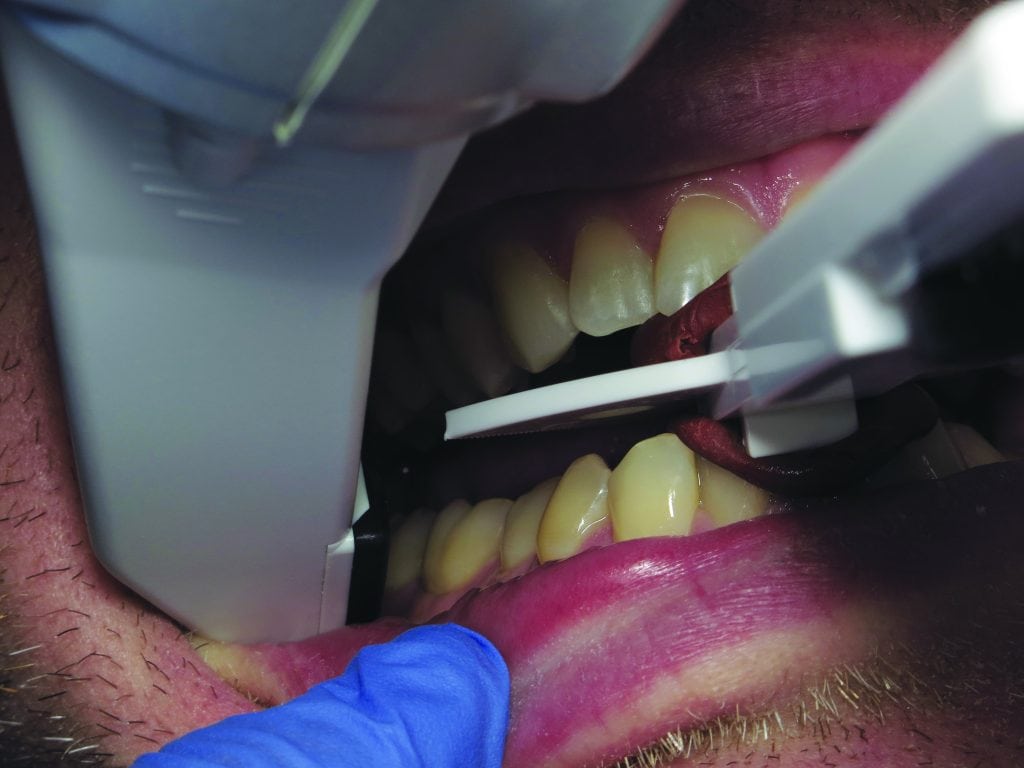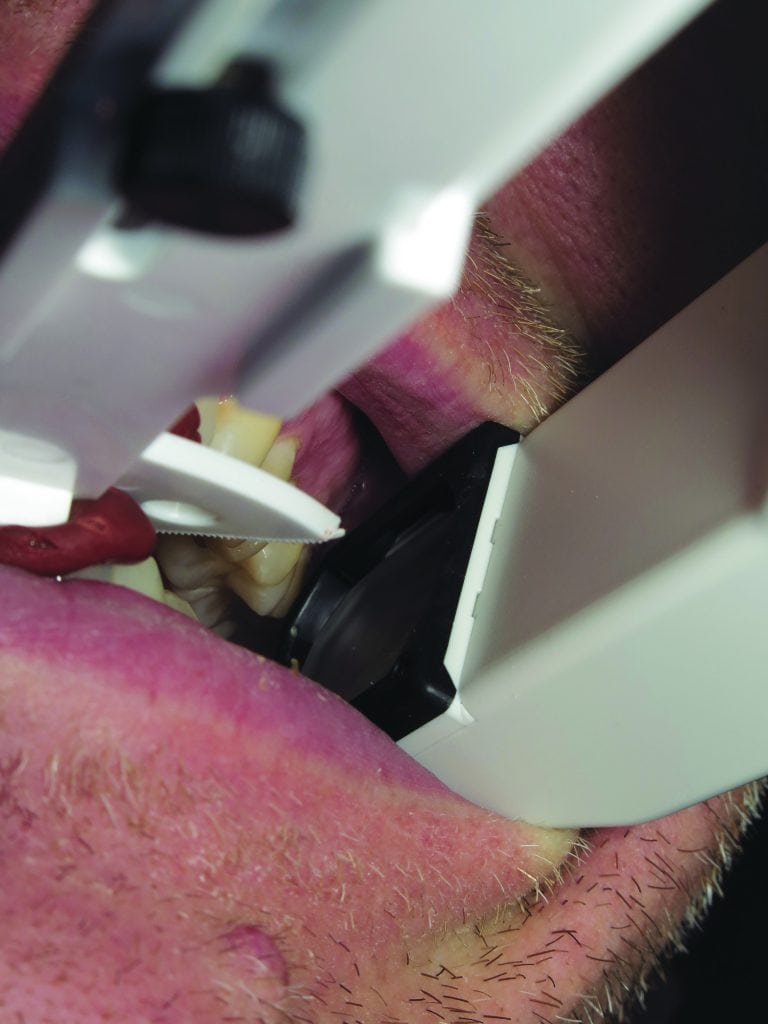by Gregory K. Ross, DDS
The fabrication of custom oral sleep appliance has conventionally required dental impressions and a bite record of the therapeutic starting point. Once this is done these records must be shipped to the dental lab. Shipping the records can add several days to the construction process of the appliance. In addition, the impression procedure in general is one that patients do not look forward to and may even forgo a dental appliance just to avoid it.
Recently, intra oral scanners have proliferated giving the patient the option of digital scans without any type of impression material in their mouth. A series of pictures are taken of the patient’s dental arch and stitched together with software to create a digital dental model. Manufacturers also claim that appliances made from these models are more accurate than those made from conventional dental impressions.
This article shows you what is needed to fabricate an oral sleep appliance using digital scans and a digital bite. The flow chart shows the steps from start to finish.

Figure 1: Intraoral photos showing the right buccal, center buccal and left buccal of an OSA patient in maximum intercuspation.
Figure 2: Intraoral photos showing the right buccal, center buccal and left buccal with Airway Metrics guide in place showing therapeutic position of the same patient in Figure 1[
Figure 1 shows the occlusion of a patient in need of a sleep appliance. In this patient, the therapeutic bite was taken using an Airway Metrics gauge (Airway Metrics LLC, Tacoma, USA) as seen in figure 2. The first step when using an iTero scanner (Align Technology, San Jose, USA) is scan the upper arch then the lower arch. Then the construction bite must be recorded using the dentist’s method of choice, such as shown in Figure 3a. Here the patient’s bite is supported in the anterior using a Pro Gauge (Airway Management, Carrolton, USA) with polyvinyl siloxane where the dentists wants the initial position of the appliance. With this in place the right buccal and left buccal are scanned to record the bite as shown in figure 3b and 3c, respectfully. Once we have the upper arch, lower arch and bite scanned in, the itero software will create a digital file in the bite position as shown in Figure 4 which is the same patient as in Figure 1.
This file can then be converted to Stereolithography (STL) files which can be electronically sent to a dental lab. This avoids shipping time delays. Different scanners produce STL files natively and do not require conversion.


Figure 3a: Intra oral picture showing a construction bite using a shortened Pro Gauge with polyvinyl siloxane index of the anterior teeth.

Figure 3b: Right intra oral showing itero wand and bite gauge in position to capture right side of therapeutic bite.

Figure 3c: Left intra-oral showing iTero wand and bite gauge in position to capture left side of therapeutic bite.
Once the lab processes the STL files of the upper arch, lower arch and bite, all three can be 3D printed. Then the lab mounts the case in the therapeutic position as shown in Figure 5. From here the lab fabricates the oral sleep appliance as they normally would do such as the one in Figure 6, made for the patient in Figure 1.

Figure 4: Right, center and left views of digital scans in therapeutic position as seen Figure 2.

Figure 5: Right, center and left views of 3 D printed upper arch, lower arch and bite record use to mount on an articulator to fabricate an oral appliance.

Figure 6: Right, center and left views of an oral appliance made through digital scans and bite record for patient in Figure 1.
The advantages of this method are improvements of the doctor’s work flow with the elimination of initial shipping of records and impression materials, patient comfort by avoiding traditional impressions and more accurately fitting appliances as found with aligners made from digital scans verses from impressions. This method will most likely, become the standard of care for fabricating oral appliances in the near future.

